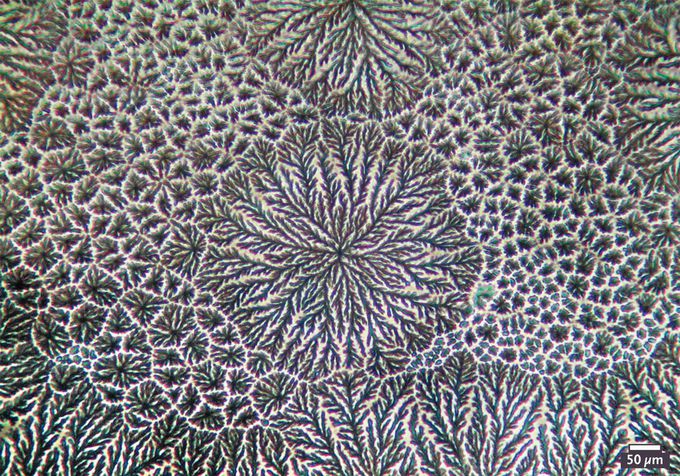


Ferning in Nasal Mucus
In a laboratory setting, a sample of nasal mucus from a healthy person was examined by phase-contrast microscopy at high magnification. A normal ferning pattern was observed. Mucus is predominantly water; electrolytes, mucin glycoproteins, lipids, and other smaller proteins constitute its nonaqueous components. When there is a balance of these nonaqueous components in healthy mucus, the evaporation of water can lead to crystallization of the electrolytes, and fern formation occurs. In combination with ciliary movement, the nasal mucus constitutes an important part of the innate defense mechanism of the airways, referred to as mucociliary clearance. A number of conditions, including allergic rhinitis and rhinosinusitis, may be characterized in part by a reduction in ferning.

